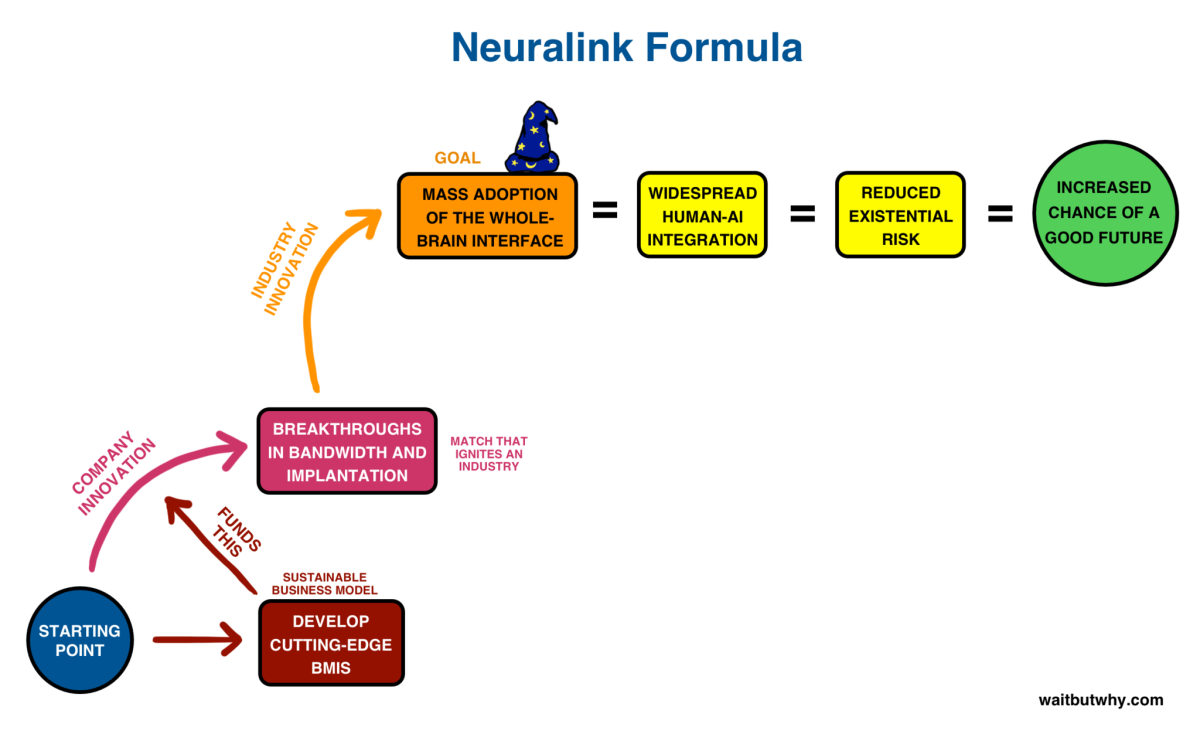A quick guide to Elon Musk’s new brain-implant company, Neuralink

- Share via
A long post on the website Wait But Why, written by Tim Urban, lays out the background of the company, its team and its plans to develop what are known as brain-machine interfaces. The post also goes into detail about neuroscience, illustrated along the way with stick figure drawings, and includes portions of interviews with Musk and other members of the Neuralink team.
The San Francisco-based Neuralink joins the list of California companies headed by Musk. He also serves as chief executive of electric-car maker and energy storage firm
Here’s a quick digest of highlights from Urban’s post.
Who’s behind this venture?
Neuralink’s team is:
- Flip Sabes, a UC San Francisco professor whose lab has worked on brain-machine interfaces
- Ben Rapoport, a neurosurgeon who also has a PhD in electrical engineering and computer science from MIT
- DJ Seo, who designed a new brain-machine interface concept while studying at UC Berkeley
- Paul Merolla, who has been a designer for more than 10 brain-inspired chips
- Vanessa Tolosa, a researcher of biocompatible materials at the Lawrence Livermore National Laboratory
- Max Hodak, who worked on brain-machine interface technology while at Duke University
- Tim Hanson, a researcher at the Berkeley Sensor and Actuator Center
- Tim Gardner, an associate professor of biology at Boston University who has worked on implanting brain-machine interfaces in birds
- Musk, who serves as the company’s CEO
Urban says Sabes and Gardner left tenured positions to join the team.
What’s the first project?
The team plans to develop a device that can be implanted in the brain that will help people who have certain brain injuries, such as those who have had strokes. Musk said on the blog that Neuralink plans to bring that device to market in about four years.
What’s the eventual, ultimate goal?

Neuralink wants to create a “whole-brain interface,” or what Urban describes in more conversational terms on the blog as a “wizard hat” for the brain.
This device would be so completely integrated into the brain that it would feel “part of you,” Urban says in the blog. This interface would give the brain the ability to connect wirelessly with the cloud — with computers and other brains that also have the interface.
“This flow of information between your brain and the outside world would be so effortless, it would feel similar to the thinking that goes on in your head today,” the blog says.
Although this idea may creep people out, Musk said the level of technology available today already makes people a “cyborg.”
“You’re already a different creature than you would have been 20 years ago, or even 10 years ago,” he said on the blog. “I think people — they’re already kind of merged with their phone and their laptop and their applications and everything.”
What’s the point of that?
The implant is ultimately Musk’s attempt to fight potentially dangerous applications of artificial intelligence.
“We’re going to have the choice of either being left behind and being effectively useless or like a pet — you know, like a house cat or something — or eventually figuring out some way to be symbiotic and merge with AI,” he said on the blog.
What’s the timeline?
Musk told the blog that he thinks brain-machine interface devices could be used by people without medical need in the next eight to 10 years.
However, the entrepreneur, who is known for his overly optimistic deadline announcements, did couch that by saying it does depend “heavily on regulatory approval timing and how well our devices work on people with disabilities.”
ALSO
Companies start implanting microchips into workers' bodies
Tesla stock is on a tear. Now the pressure is on for Elon Musk to deliver the Model 3
Elon Musk's wager that Tesla can fix South Australia's blackouts brings the energy future closer




